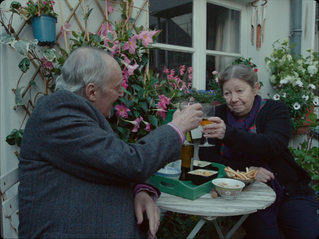1968
- Jessica Moore

- May 2, 2021
- 4 min read
Updated: Nov 10, 2023
On playing-a-role

In today’s imagination, 1968 is remembered as a year cloaked in the ethos of subversion—one characterised by the ubiquity of home-owned television sets, generational divide, and images of war, assassination, and protest. This social context ostensibly influenced film, including its reception and its production. Political unrest in France lead to the cancelation of Cannes Film Festival. In Hollywood, studio moguls who oversaw the Golden Age were made obsolete. Due to the official abolition of the Hays Code, 1968 saw the directorial independence and creativity that was to define the 1970s. Indeed, the films of 1968 paved the way for the modern auteur; they served as a cultural barometer of Western discontent.
1968 saw Stanley Kubrick turn to outer space in 2001: A Space Odyssey, Peter Yates explore renegade police in Bullitt, and Sergio Leone refine the architecture of the Spaghetti Western in Once Upon a Time in the West. Other directors reveled in nostalgia (The Lion in Winter, Romeo and Juliet, Funny Girl, Oliver!). Others, tempted by Hitchcock’s Psycho, began to consider the imminence of distrust and individual doubt. By 1968, horror films reconciled the modern individual with a genre owed precisely to vulnerability. Monsters were supplanted by familiar (often suburban) figures: by Satan-worshipping neighbours in Roman Polanski’s Rosemary’s Baby, by the ruling class in Ingmar Bergman’s Hour of the Wolf, by cannibal civilians in George A. Romero’s Night of the Living Dead. Parenthetically, 1968 saw the introduction of the MPA’s film rating system. In the immediate aftermath of the Hays Code abolition, there was an impulse to protect audiences and to stratify their exposure. Seeing, as a perilous enterprise, became a fixture of the culture.


While Polanski’s Rosemary’s Baby is lodged in the cultural psyche for its scarring depictions of maternal horror and sexual violence, its continuity with other features of 1968 has much to do with its fascination towards playing a role. Rosemary’s husband, Guy, is an actor; the woman in the basement is mistaken for a famous actress; Rosemary slips into the romantic image of a mother-to-be. This image of pre-natal femininity is disrupted by neighbours Minnie and Roman Castevet, who, under the guise of diligence and care, isolate Rosemary from all external influence and feed her a curious diet of herbal supplements—yielding her malnourishment and paranoia. Willing the self-preservation of herself and her unborn child, Rosemary becomes attuned to the duplicity of her surroundings: a barricaded closet, absent paintings on yellowed wallpaper, the chalky under-taste of a chocolate dessert. Rosemary drifts atop the surface oblivious to what is being masked. Congratulatory bouquets of flowers fill the apartment as a morbid curtain call; there’s only so much rot a charade can withstand.
Deception is embedded into the fabric of Polanski’s film. There are no singular forces of such, but rather a system of players. Most notable of all is Guy, whose collusion hinges on the Faustian bargain that his career will be furthered should he actuate and uphold the conspiracy against Rosemary (in-keeping with the theme of deception and as a reward for his compliance, Guy’s professional rival is blinded by the cult). This network of action gives credence to a coexisting social anxiety: that violence is no longer mythologised as autocratic, as previously depicted by solitary monsters, but as an insidious undercurrent of collective organisation. Their influence is too big—their victims too outnumbered.
Similar commentary is present in Hour of the Wolf. Bergman’s only horror film is a folkloric exploration into the disappearance of a fictional artist Johan Borg (likely based on Bergman himself) as survived by his pregnant wife, Alma. Beginning in the realm of faux-documentary—soundbites quiet! ready for take! overlay a black screen—Alma sits before the camera to reveal her husband’s story. What follows is a gothic mosaic of insomnia (as felt by Johan), dinner parties hosted by Johan’s admirers at a sepulchral castle, and a smouldering analogy of artistry as a portal to self-destruction. Sven Nykvist’s camerawork attests to this. Covens of aristocrats encroach on the camera as if to pull apart Johan’s corporeality—as if to hasten his psychological degradation. Thereafter, Johan becomes trapped in a decadent loop of performance and exhibition. His sanity dangles and atrophies as night fades inevitably into dawn.


A product of a richly Bergmanian sensibility, Hour of the Wolf is a film concerned with the antidotal properties of identification. Alma—a muse and housewife with little purpose of her own—yearns to feel a sense of duality with her husband. She ponders: as people grow old together, they start to resemble each other, they have the same thoughts, same facial expressions. Materializing this outwardly romantic fate, Alma’s identity becomes inflected by Johan’s. Late nights spent consoling her husband through insomnia begin to chip away at her; her once speculative distance to the horror grows smaller. Vulnerably, she asks the camera: is that why I started to see those spirits? Or were they there regardless? Alma is tempted to believe the latter, for at least it supposes an existence outside of Johan’s interiority, even if only as a spectator.








Comments